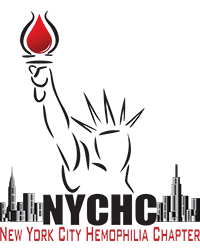Community Profile: Adriana Caceres (English & Español)
Community Profile: Adriana Caceres (English)
Alexa Abreu, HFA’s Policy and Government Relations Intern, recently interviewed Adriana Caceres, the mother of two children with Hemophilia A.
Alexa Abreu: Who has a bleeding disorder in the family? What disorder is it?
Adriana Caceres: Both of my children were diagnosed with Hemophilia A, Jason (13 y/o) and Steve (5 y/o). I am also a carrier of Von Willebrand Disease and my father had Hemophilia.
AA: When were your children diagnosed with Hemophilia A?
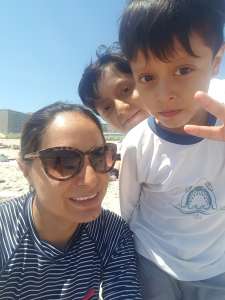 AC: My first son Jason was diagnosed when he was 8 years old. He had to get a tooth removed due to a cavity. I didn’t think anything of it. I just took him to the doctor and scheduled a time to extract the tooth. Following the extraction, Jason began to bleed heavily; he was forming blood clots that would then explode in his mouth. For an entire week, all I remember was Jason washing his mouth constantly and seeing a lot of blood in the sink. It was traumatizing for the both of us. I took him back to the clinic where the tooth was extracted, but they told me he was fine. They advised me to let him rest for a couple more days, but it was normal to bleed after removing a tooth from a child. The bleeding however, didn’t stop. I then took him to the nearest hospital in Flushing, Queens to the emergency room. The doctors at the hospital expressed that he most likely had a problem with his blood, but no formal diagnosis was given. He was then transferred to Elmhurst hospital, where Mount Sinai doctors arrived to confirm that Jason does have a bleeding disorder. I then remembered that my father had Hemophilia and informed the doctors. I never thought my child would have Hemophilia, as I had never been diagnosed with it. This is how I met doctor Hurlt who diagnosed Jason with Hemophilia A. This event was traumatizing and exhausting. At the time, I was pregnant with my second son, which added more stress and uncertainty. Jason suffered a lot after his tooth extraction; he was unable to eat for days, couldn’t get out of bed, go to school, and had no energy to do anything. As a mother, it’s so difficult to see your young child go through something like this.
AC: My first son Jason was diagnosed when he was 8 years old. He had to get a tooth removed due to a cavity. I didn’t think anything of it. I just took him to the doctor and scheduled a time to extract the tooth. Following the extraction, Jason began to bleed heavily; he was forming blood clots that would then explode in his mouth. For an entire week, all I remember was Jason washing his mouth constantly and seeing a lot of blood in the sink. It was traumatizing for the both of us. I took him back to the clinic where the tooth was extracted, but they told me he was fine. They advised me to let him rest for a couple more days, but it was normal to bleed after removing a tooth from a child. The bleeding however, didn’t stop. I then took him to the nearest hospital in Flushing, Queens to the emergency room. The doctors at the hospital expressed that he most likely had a problem with his blood, but no formal diagnosis was given. He was then transferred to Elmhurst hospital, where Mount Sinai doctors arrived to confirm that Jason does have a bleeding disorder. I then remembered that my father had Hemophilia and informed the doctors. I never thought my child would have Hemophilia, as I had never been diagnosed with it. This is how I met doctor Hurlt who diagnosed Jason with Hemophilia A. This event was traumatizing and exhausting. At the time, I was pregnant with my second son, which added more stress and uncertainty. Jason suffered a lot after his tooth extraction; he was unable to eat for days, couldn’t get out of bed, go to school, and had no energy to do anything. As a mother, it’s so difficult to see your young child go through something like this.
AA: Following the tooth extraction and constant bleeding, how long did it take the doctors to diagnose Jason with a bleeding disorder?
AC: Quickly after he was transferred to Elmhurst hospital and checked by Mount Sinai doctors, he was diagnosed. He was 8 years old, so for 8 years we were unaware that Jason had Hemophilia. My other son, Steve, was diagnosed quickly after birth.
AA: Are they both receiving any treatment?
AC: Yes – both receive treatment. In case of emergencies, they are infused at the hospital.
AA: Have you experienced difficulties receiving treatment?
AC: They can’t infuse by themselves and I don’t know how to infuse my children. In case of an emergency, I must take a one-hour train ride, while the child is having a bleed, to a hospital in Manhattan, for them to be infused. I could potentially go to a nearby hospital, but the wait is so long – it usually takes 3 or 4 hours. I can’t sit in an emergency room for hours with my child profusely bleeding before they are treated. I would rather drop whatever I’m doing and get on the train for an hour than delay treatment for my child. Another difficulty is having a language barrier- not being able to communicate well in English.
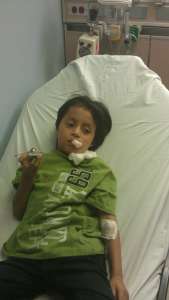 AA: How much English do you speak?
AA: How much English do you speak?
AC: If I had a scale of 1 to 5, I would say a 1. I don’t speak or understand English well. My native language is Spanish.
AA: When you go to the hospital with your children, do the health professionals speak Spanish?
AC: The doctors nor nurses speak Spanish, a translator is always present during consults. It’s never an additional cost so, I believe the health insurance or maybe the own hospital pays for that resource. I think in my case, because my dad had Hemophilia, I understand better what is going on with Jason. However, due to the language barrier, there are some things that get lost in translation. I can only imagine how difficult it must be for someone who has absolutely no previous knowledge about bleeding disorders and can’t speak English. Translators are great if they have some background in medicine, science, and bleeding disorders.
AA: Can you speak more on the role of a translator and how effective are translators?
AC: I think it is crucial for translators who work in hospitals to be familiar with medical terms. Just because a person can translate doesn’t necessarily make them able to translate such sensitive and important information like a bleeding disorder diagnosis. A translator who isn’t aware of our community and the vocabulary used for bleeding disorders can easily confuse information and misinform patients. For instance, Amicar is a medication given at home; it’s so important for the translator to be able to communicate well with the patients to ensure proper treatment. Often, when translators don’t have the proper knowledge patients are more confused and further traumatized because they feel like they can’t even understand in their own language what is going on. In my case, I’m also grateful for my son, who speaks English, who would often jump in and translate for me.
AA: Can you think about a specific moment in which you were given help/information in Spanish and how helpful was it?
AC: When I was pregnant with my second child, Jason’s hematologist made sure that once Steven was born he was properly tested to determine if he was a Hemophilic as well. This information was translated to me, which was necessary because if the doctor would have explained it to me in English, I wouldn’t have been able to understand, and I would have been extremely worried.
AA: Have you been able to access materials, events, and resources in Spanish?
AC: Yes. It’s so much easier now to obtain materials in Spanish. Years ago, it was a lot more complicated.
AA: In your own words, why is it so crucial to be able to have resources and care provided in your native language?
AC: It’s so important to have information in a person’s native language to promote education in our community. We need to be educated and fully understand what is happening to us, our children, family members, or even friends. Like I mentioned before, this is why it’s so essential that translators are well educated on bleeding disorders. They are the bridge between the doctor and the patient; therefore, education is vital. We deserve to know what’s going on with our children, how are we supposed to understand a medical disorder in a language that we don’t understand? To have materials and resources in a person’s native language is fundamental.
AA: What kind of resources, materials, events or care would you like to see going forward provided in your native language?
AC: I would greatly appreciate it if the chapter provided the Latino community with workshops on how to infuse. I’m not talking about a one or two-hour workshop rather, a training on how to effectively infuse our children. I want to feel liberated, independent, and free to be able to help my children infuse. I don’t want to continue taking an one-hour train ride that interrupts the rest of our day for my children to receive treatment. I want to be empowered and educated on how to infuse.
Perfil de la comunidad: Adriana Caceres (Español)
Alexa Abreu, pasante de políticas y relaciones gubernamentales de HFA, entrevistó recientemente a Adriana Cáceres, la madre de dos niños con hemofilia A.
Alexa Abreu: ¿Quién tiene un trastorno hemorrágico en la familia y qué trastorno es?
Adriana Caceres: Mis dos hijos se les diagnosticó Hemofilia A, Jason (13 años) y Steve (5 años). También soy portador de la enfermedad de Von Willebrand y mi padre tenía Hemofilia.
AA: ¿Cuándo fueron diagnosticados sus hijos con hemofilia A?
 AC: Mi primer hijo Jason fue diagnosticado cuando tenía 8 años. A esa edad, tenía una carie en una muela que el doctor ordeno en sacarse. No pensé que nada mal fuera a pasar; era una simple extracción de diente. Simplemente lo llevé al médico e hice una cita médica para extraer el diente. Después de la extracción, Jason comenzó a sangrar fuertemente; estaba formando coágulos de sangre que luego explotaban en su boca. Durante toda una semana, todo lo que recuerdo es Jason lavándose la boca constantemente y viendo mucha sangre en el fregadero. Fue traumatizante para los dos. Lo llevé a la clínica donde le extrajeron el diente, pero me dijeron que estaba bien. Me aconsejaron que lo dejara descansar un par de días más, pero que era normal sangrar después de sacarle un diente a un niño. Sin embargo, el sangrado no se detuvo. Luego lo llevé al hospital más cercano en Flushing, Queens, a la sala de emergencias. Los doctores en el hospital expresaron que probablemente tenía un problema con su sangre, pero no nos dio un diagnóstico formal. Luego lo trasladaron al hospital de Elmhurst, donde llegaron médicos de Mount Sinai para confirmar que Jason tiene un trastorno hemorrágico. Entonces recordé que mi padre tenía hemofilia e informe a los médicos. Nunca pensé que mi hijo tendría Hemofilia, ya que nunca me habían diagnosticado a mí con Hemophilia. Así es como conocí al doctor Hurlt quien diagnosticó a Jason con Hemofilia A. Este evento fue traumático y agotador. En ese momento, estaba embarazada de mi segundo hijo, lo que agregó más estrés e incertidumbre. Jason sufrió mucho después de la extracción de sus dientes; no pudo comer durante días, no podía levantarse de la cama, ir a la escuela y no tenía energía para hacer nada. Como madre, es muy difícil ver a su hijo pasar por algo como esto.
AC: Mi primer hijo Jason fue diagnosticado cuando tenía 8 años. A esa edad, tenía una carie en una muela que el doctor ordeno en sacarse. No pensé que nada mal fuera a pasar; era una simple extracción de diente. Simplemente lo llevé al médico e hice una cita médica para extraer el diente. Después de la extracción, Jason comenzó a sangrar fuertemente; estaba formando coágulos de sangre que luego explotaban en su boca. Durante toda una semana, todo lo que recuerdo es Jason lavándose la boca constantemente y viendo mucha sangre en el fregadero. Fue traumatizante para los dos. Lo llevé a la clínica donde le extrajeron el diente, pero me dijeron que estaba bien. Me aconsejaron que lo dejara descansar un par de días más, pero que era normal sangrar después de sacarle un diente a un niño. Sin embargo, el sangrado no se detuvo. Luego lo llevé al hospital más cercano en Flushing, Queens, a la sala de emergencias. Los doctores en el hospital expresaron que probablemente tenía un problema con su sangre, pero no nos dio un diagnóstico formal. Luego lo trasladaron al hospital de Elmhurst, donde llegaron médicos de Mount Sinai para confirmar que Jason tiene un trastorno hemorrágico. Entonces recordé que mi padre tenía hemofilia e informe a los médicos. Nunca pensé que mi hijo tendría Hemofilia, ya que nunca me habían diagnosticado a mí con Hemophilia. Así es como conocí al doctor Hurlt quien diagnosticó a Jason con Hemofilia A. Este evento fue traumático y agotador. En ese momento, estaba embarazada de mi segundo hijo, lo que agregó más estrés e incertidumbre. Jason sufrió mucho después de la extracción de sus dientes; no pudo comer durante días, no podía levantarse de la cama, ir a la escuela y no tenía energía para hacer nada. Como madre, es muy difícil ver a su hijo pasar por algo como esto.
AA: Después de la extracción del diente y la hemorragia constante, ¿cuánto tiempo tardaron los médicos en diagnosticar a Jason con un trastorno hemorrágico?
AC: Rápidamente después de que fue trasladado al hospital de Elmhurst y revisado por médicos de Mount Sinai, fue diagnosticado. Tenía 8 años, así que durante 8 años no sabíamos que Jason tenía Hemofilia. Mi otro hijo, Steve, fue diagnosticado rápidamente después del nacimiento.
AA: ¿Ambos están recibiendo algún tratamiento?
AC: Sí, ambos reciben tratamiento. En caso de emergencias, se infunden en el hospital.
AA: ¿Ha tenido usted dificultades para que sus hijos reciban tratamiento?
AC: No pueden infundirse por sí mismos y no sé cómo infundir a mis hijos. En caso de emergencia, debo tomar un viaje en tren de una hora, mientras el niño está sangrando, a un hospital en Manhattan, para que se infundan. Podría ir a un hospital cercano, pero la espera es tan larga, por lo general toma de 3 a 4 horas. No puedo sentarme en la sala de emergencias durante horas con mi hijo sangrando profusamente antes de que sean tratados. Prefiero dejar todo lo que estoy haciendo y montarme en el tren por una hora que retrasa el tratamiento para mis hijos. Otra dificultad es la barrera del idioma, no poder comunicarse bien en inglés.
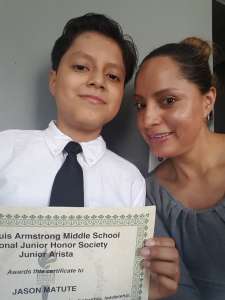 AA: Si tuviera una escala del 1 al 5, ¿Cuánto inglés habla?
AA: Si tuviera una escala del 1 al 5, ¿Cuánto inglés habla?
AC: Si tuviera una escala de 1 a 5, diría un 1. No hablo ni entiendo bien el inglés. Mi lengua materna es el español Cuando va al hospital con sus hijos.
AA: ¿Los profesionales de la salud hablan español?
AC: Ni os médicos o enfermeras hablan español, un traductor está siempre presente durante las consultas. Nunca es un costo adicional, así que creo que el seguro de salud o quizás el propio hospital paga ese recurso. Creo que, en mi caso, porque mi papá tenía Hemofilia, entiendo mejor lo que está pasando con Jason. Sin embargo, debido a la barrera del idioma, hay algunas cosas que se pierden en la traducción. Solo puedo imaginar lo difícil que debe ser para alguien que no tiene absolutamente ningún conocimiento previo sobre los trastornos de la coagulación y no puede hablar inglés. Los traductores son geniales si tienen experiencia en medicina, ciencia y trastornos hemorrágicos.
AA: ¿Puede hablar más sobre el papel de un traductor y qué tan efectivos son los traductores?
AC: Creo que es crucial para los traductores que trabajan en hospitales estar familiarizados con los términos médicos. El hecho de que una persona pueda traducir no necesariamente les permite traducir información tan sensible e importante como un diagnóstico de trastorno hemorrágico. Un traductor que no conoce nuestra comunidad ni el vocabulario utilizado para los trastornos hemorrágicos puede confundir fácilmente la información y desinformar a los pacientes. Por ejemplo, Amicar es un medicamento administrado en el hogar; es tan importante para el traductor poder comunicarse bien con los pacientes para garantizar un tratamiento adecuado. A menudo, cuando los traductores no tienen el conocimiento adecuado, los pacientes están más confundidos y más traumatizados porque sienten que ni siquiera pueden entender en su propio idioma lo que está sucediendo. En mi caso, también estoy agradecido por mi hijo, que habla inglés, que a menudo traduce para mí.
AA: ¿Puede pensar en un momento específico en el que le dieron ayuda / información en español y qué tan útil fue?
AC: Cuando estaba embarazada de mi segundo hijo, la hematóloga de Jason se aseguró de que una vez que Steven naciera, se le realizaran las pruebas adecuadas para determinar si también era hemofílico. Esta información me fue traducida, lo que era necesario porque si la doctora me lo hubiera explicado en inglés, no habría podido entenderlo, y hubiera estado extremadamente preocupada.
AA: ¿Ha podido acceder a materiales, eventos y recursos en español?
AC: Sí. Ahora es mucho más fácil obtener materiales en español. Años previos, era mucho más complicado.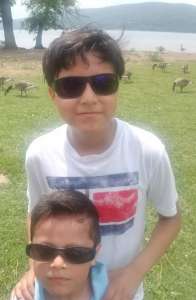
AA: En sus propias palabras, ¿por qué es tan crucial poder contar con recursos y materiales en su lengua natal?
AC: Es muy importante tener información en el idioma nativo de una persona para promover la educación en nuestra comunidad. Necesitamos ser educados y comprender completamente lo que nos está pasando a nosotros, a nuestros hijos, a los miembros de nuestra familia, o incluso a nuestros amigos. Como mencioné antes, esta es la razón por la cual es tan esencial que los traductores conozcan bien sobre los trastornos de la coagulación. Son el puente entre el doctor y el paciente; por lo tanto, la educación es vital. Merecemos saber qué está pasando con nuestros hijos, ¿cómo se supone que debemos entender un trastorno médico en un idioma que no entendemos? Tener materiales y recursos en el idioma nativo de una persona es fundamental.
AA: ¿Qué tipo de recursos, materiales, eventos o le gustaría ver en su lengua materna en el futuro?
AC: Le agradecería mucho si el capítulo proporcionara a la comunidad latina talleres sobre cómo infundir. No estoy hablando de un taller de una o dos horas sino de un entrenamiento sobre cómo infundir efectivamente a nuestros niños. Quiero sentirme liberada, independiente y libre para poder ayudar a mis hijos a infundir. No quiero continuar tomando un viaje en tren de una hora que interrumpe el resto del día para que mis hijos reciban tratamiento. Quiero ser empoderada y educada sobre cómo infundir.
